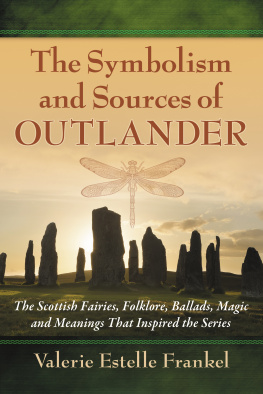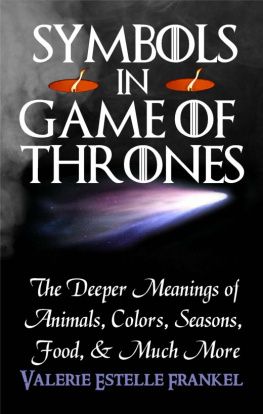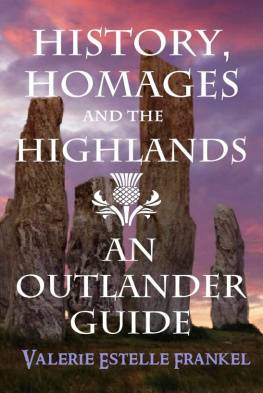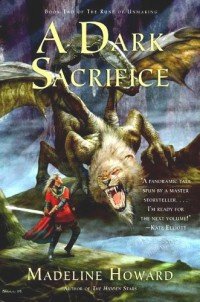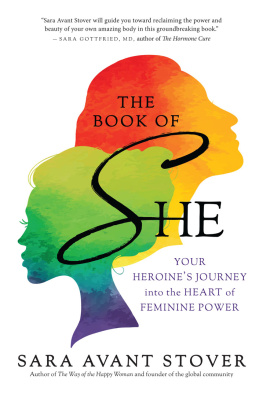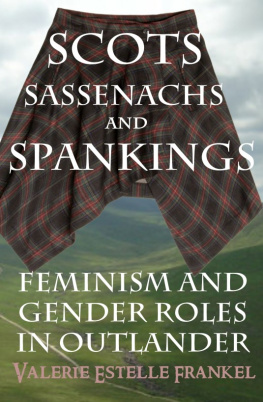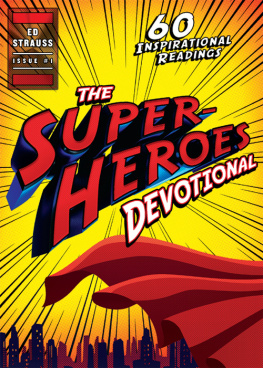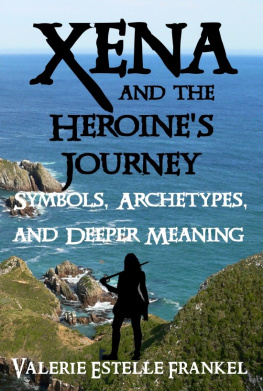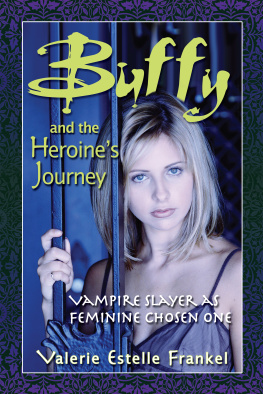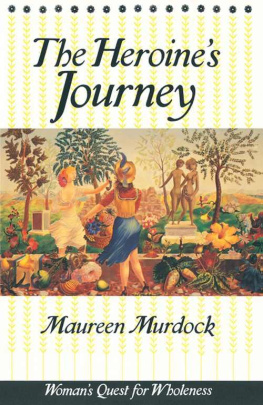
Also by OR EDITED BY
VALERIE ESTELLE FRANKEL
AND FROM MCFARLAND
Outlanders Sassenachs: Essays on Gender, Race, Orientation and the Other in the Novels and Television Series (edited, 2016)
Adoring Outlander: Essays on Fandom, Genre and the Female Audience (edited, 2016)
The Symbolism and Sources of Outlander: The Scottish Fairies, Folklore, Ballads, Magic and Meanings That Inspired the Series (2015)
The Comics of Joss Whedon: Critical Essays (edited, 2015)
Women in Game of Thrones: Power, Conformity and Resistance (2014)
Teaching with Harry Potter: Essays on Classroom Wizardry from Elementary School to College (edited, 2013)
Buffy and the Heroines Journey: Vampire Slayer as Feminine Chosen One (2012)
From Girl to Goddess: The Heroines Journey through Myth and Legend (2010)
Superheroines and the Epic Journey
Mythic Themes in Comics, Film and Television
Valerie Estelle Frankel
Foreword by Trina Robbins

McFarland & Company, Inc., Publishers
Jefferson, North Carolina
LIBRARY OF CONGRESS CATALOGUING DATA ARE AVAILABLE
BRITISH LIBRARY CATALOGUING DATA ARE AVAILABLE
e-ISBN: 978-1-4766-2801-1
2017 Valerie Estelle Frankel. All rights reserved
No part of this book may be reproduced or transmitted in any form or by any means, electronic or mechanical, including photocopying or recording, or by any information storage and retrieval system, without permission in writing from the publisher.
Cover illustration 2017 Gazometr/iStock
McFarland & Company, Inc., Publishers
Box 611, Jefferson, North Carolina 28640
www.mcfarlandpub.com
Foreword
The Heroine with a Thousand Faces
by Trina Robbins
My second grade schoolteacher mother taught me to read at the age of four, and I have been reading comics ever since. I started with the comics my mother bought me: Raggedy Ann, Our Gang, Donald Duck and Uncle Scrooge, but as soon as I was old enough to cross two streets, I went regularly to Mr. Itskowitz candy store with a dime clutched in my hot little hand, and made my own choices. Without having to think twice about it, I gravitated to any comic that starred a woman or girl. This was the era of Timelys teen titles: Patsy Walker, Millie the Model, Tessie the Typist, and a seemingly endless line of comics about teenagers and career girls. Archie comics didnt move me. Sure, they co-starred Betty and Veronica, but the blonde and brunette spent their time fighting over Archie, while the Timely teen girls had their own adventures.
It was only a matter of time before I discovered superheroinesyikes! Mary Marvel, Miss America, Moon Girland Wonder Woman! I loved them all, but there was something about Wonder Woman that resonated most deeply within my skinny little girl heart. I had never before heard of Amazons, and werent they wonderful? They lived on an island where there were no boys allowed, a refreshing change from my real life world, were everything said No Girls Allowed, including the presidency. And there was something else, something indefinable that made Princess Diana special. I couldnt understand it, but I could feel it.
Fast forward 40 years. Its June 1988, and I am suffering from a mysterious ailment that manifests itself in a constant fever and pain in my joints. (I later discovered it was mononucleosis.) Too feverish to even read, all I can do is recline in front of the TV. What a cosmic coincidence! What should be running on public television but a six-part series called The Power of Myth, featuring immortal mythologist Joseph Campbell, interviewed by journalist Bill Moyers. Too weak to even comment, I can only grunt with epiphany as, in an altered state, I watch Joseph Campbell explain to me why I so love Wonder Woman.
Suddenly everything is clear to me! Starting with her creation, by a virgin mother and a deity, Princess Diana is the universal hero, called to her journey when Steve Trevors plane crashes on her mystical island, venturing forth to heal America, the wounded land battling the Axis forces of evilwow!
Now, along comes Valerie Estelle Frankels Superheroines and the Epic Journey, saying that not just my beloved Wonder Woman, but a world of superheroines, from Marvel comics to Egypt and India, from the Golden Age Black Widow to Promethea, from Joss Whedons Buffy to Whedons unmade Wonder Woman film, are all universal heroes, and she shows us how in these pages.
My favorite section has to be the one on costume. Joseph Campbell says, Youre in another transformation you put on a uniform, youre another creature. Marla Drake dons the magical panther skin that her explorer uncle brought back from Africa, and her adventures as Miss Fury begin. Princess Dianas starry skirt and eagle-emblazoned bustier have power, too. The princess wins her outfit in the Amazon Olympics. And only when she dons it does she become Wonder Woman. So clothes really do make the woman! In fact, all those male cartoonists whove drawn Wonder Woman in the past, whove taken away her iconic costume and dressed her in everything from white catsuits to leather jackets and combat boots, are they attempting to take away her power? Does this explain my love of fashion?
So here we are, simple flesh-and-blood mortals. We cant fly, bullets dont bounce off us, were not fast enough to play bullets and bracelets. But isnt every birth a small miracle? Shouldnt we follow our bliss? And when the call for help comes, shouldnt we heed it? I think of my favorite David Bowie line: we can be heroes. We can all be heroes.
Trina Robbins has been writing books, comics, and graphic novels for more than 40 years. Her books Nell Brinkley and the New Woman in the Early 20th Century (McFarland, 2001) and Tarpe Mills and Miss Fury (2011) were nominated for Eisner and Harvey awards. Her 2013 graphic novel Lily Renee: Escape Artist was awarded a gold medal from Moonbeam Childrens Books. After her Pretty in Ink (2013), her definitive history of women cartoonists, she was voted into the Will Eisner Comic Book Hall of Fame.
Introduction
Considering Superheroes and Heroines
Joseph Campbells heros journey has long been linked with superheroes. As Campbell describes his monomyth, also called the chosen one plot, in The Hero with a Thousand Faces: A hero ventures forth from the world of common day into a region of supernatural wonder: fabulous forces are there encountered and a decisive victory is won: the hero comes back from this mysterious adventure with the power to bestow boons on his fellow man (23).
The hero, with epic birth and awesome powers (whether from the gods or a radioactive spider bite), accepts his destiny and rides off to battle. Campbell scholar Christopher Vogler explains, The hero is presented with a problem, challenge, or adventure to undertake. Once presented with a Call to Adventure, she can no longer remain indefinitely in the comfort of the Ordinary World (15). On a deeper level, the call signals the awakening of the self, an eagerness to become something more. After mentorship, friends and trials, he descends into death itself where he faces his own dark side. After, he returns with a new understanding he uses to enrich his community. Thus Superman, in the darkest place of all, battles his Bizarro self, or the archetypally-named Darkseid, or his Kryptonian relatives, or Doomsday itself. This makes the epic plot fans most adore.
Next page

